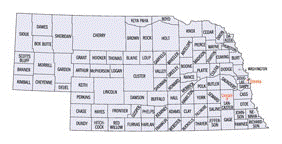Geography Program

Geography Program: Faculty Publications
Document Type
Article
Date of this Version
1982
Abstract
Inexperienced researchers seeking to solve geographic problems are often confronted with a wide choice of techniques available for acquiring data. Unfortunately, information about these techniques is scattered among various publications. This text was written, therefore, for the purpose of assembling several potential field methods into one publication. It provides aspiring researchers with the opportunity to compare alternative types of data-gathering techniques and to select those appropriate to particular research problems.
Although the emphasis is on research in human geography, the techniques presented are useful for other groups of readers such as urban planners, regional planners, sociologists, and others concerned with areal data and locational problems. Some terminology, several cited references, and the suggested applications at the end of chapters are intended for a typical college junior, senior, or beginning graduate student in geography. Nevertheless, the subject matter should be meaningful to and usable by persons in other disciplines and those not formally enrolled in school, such as community volunteers, agency personnel, and teachers of the social sciences. For readers unfamiliar with the geographic perspective, Chapter 1 and the numerous applications to the hypothetical city of Choros should provide an adequate background for understanding the remainder of the text.
Background information about the role of field data is presented in Chapter 1. Chapters 2, 3, 4, and 10 deal with the many preparatory tasks and decisions that precede the actual collection of data. The remaining chapters describe and evaluate various groups of data-collecting techniques. One group of techniques are those requiring direct visual observations of human beings, and of their cultural and natural environments (Chapter 5). Another group deals with strategies that obtain data by asking persons questions about themselves and their spatial activities (Chapter 6). A third group concerns the data that are available from the imagery produced by remote sensors (Chapter 7). A fourth group concerns information acquired by consulting primary sources which may be found in libraries, data banks, attics, and other places where archival items and similar materials may be stored (Chapter 8). One chapter (Chapter 9) pertains primarily to the difficulties encountered in observing and measuring phenomena in motion.


Comments
Published in 1982 by Kendall/Hunt for National Council for Geographic Education. Electronic edition copyright 2010 Robert H. Stoddard.